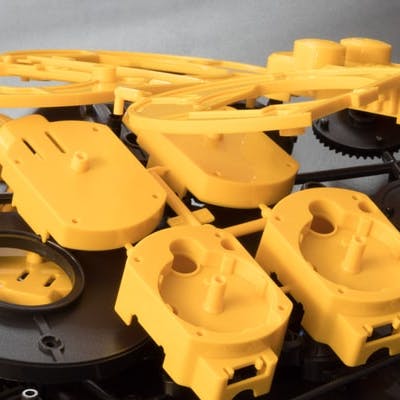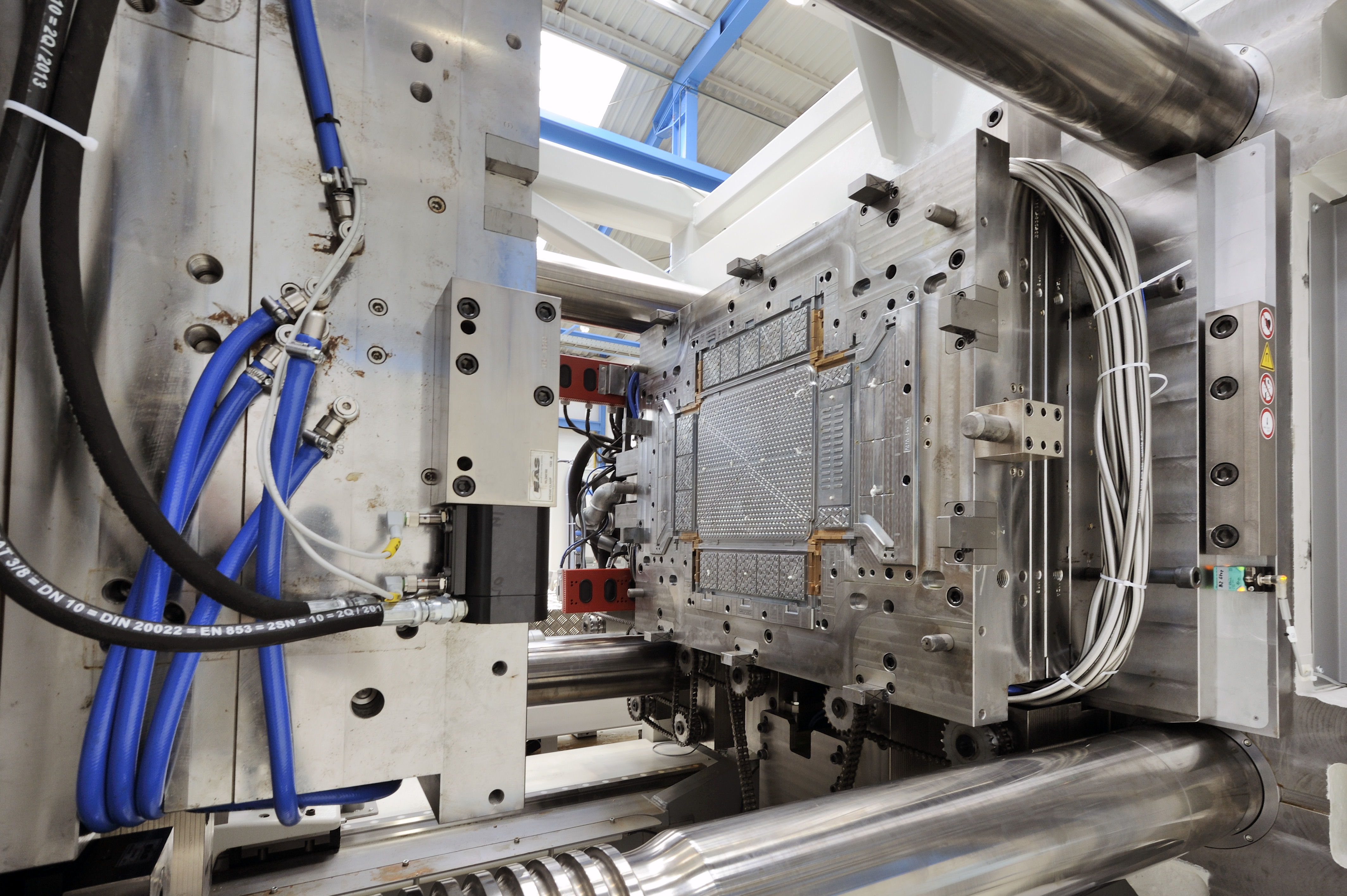The Advantages of Using Plastic Injection Molding for Customized Parts Production
The Advantages of Using Plastic Injection Molding for Customized Parts Production
Blog Article
Understanding the Fundamentals of Plastic Shot Molding Processes
Plastic shot molding works as a foundation of modern-day production, supplying a systematic method to generating intricate parts with precision. This process not just incorporates the fundamental steps of melting and injecting materials into molds yet likewise entails a nuanced understanding of numerous influencing factors, such as temperature and pressure. As markets progressively require performance and top quality, the intricacies of this approach end up being much more important. Discovering these crucial elements could disclose just how even small changes can cause significant renovations in manufacturing end results, elevating concerns regarding the capacity for development in this well established process.
What Is Plastic Injection Molding?
Plastic injection molding is a widely used production process that changes thermoplastic and thermosetting materials into precise and complicated forms. This technique is preferred for its ability to create high quantities of identical get rid of remarkable precision, making it an important approach in various markets, consisting of automobile, consumer items, and medical gadgets.
The procedure involves melting the selected plastic product and infusing it into a mold under high stress. The mold and mildew, designed to the requirements of the wanted component, allows the molten plastic to take form as it solidifies and cools down. Once the material has actually set, the mold is opened, and the completed part is ejected.
Plastic injection molding provides a number of benefits, consisting of lowered waste, consistency in production, and the capability to integrate complex layouts that might be testing with various other manufacturing methods. Additionally, it supports a broad variety of materials, each offering special residential or commercial properties that can be tailored for particular applications. As markets proceed to introduce, plastic injection molding stays at the leading edge, allowing the growth of sophisticated products that meet evolving consumer needs.
The Shot Molding Refine
The injection molding process is a sophisticated technique that entails numerous crucial phases to generate premium plastic parts. Plastic pellets are fed into a heated barrel where they are melted right into a thick liquid. This molten plastic is then infused under high stress into a precision-engineered mold, which forms the product into the desired kind.
When the mold and mildew is filled up, the plastic is enabled to strengthen and cool, taking the form of the mold cavity. Cooling time is crucial, as it influences the cycle time and the last residential properties of the molded part. After adequate cooling, the mold and mildew opens, and the finished element is ejected making use of ejector pins.

Products Made Use Of in Shot Molding
Numerous products can be made use of in the shot molding procedure, each offering special properties that accommodate specific applications. The most frequently made use of products consist of thermoplastics, thermosetting plastics, and elastomers.

Thermosetting plastics, like epoxy and phenolic materials, undergo a chemical modification throughout the curing process, causing a rigid, inflexible framework. These materials are suitable for applications calling for high heat resistance and architectural integrity, usually used in automotive components and electric insulators.
Elastomers, consisting of silicone and rubber-based materials, offer adaptability and resilience. Their distinct properties make them ideal for applications that demand elasticity, such as seals and gaskets.
In addition, specialized products like bio-based plastics and compounds are gaining traction for their environmental benefits and improved performance attributes, broadening the scope of injection molding applications in different sectors. Understanding the residential properties of these materials is essential for choosing the suitable type for particular jobs.
Benefits of Injection Molding
Injection molding stands apart as a highly efficient manufacturing procedure that supplies countless advantages for creating complicated parts with precision. One of one of the most substantial advantages is the capability to produce intricate designs that would certainly be difficult or challenging to attain with other techniques (Plastic Injection Molding). The process permits limited resistances and detailed attributes, making sure high-grade parts
In addition, shot molding is recognized for its fast production capacities, making it an excellent option for high-volume manufacturing. As soon as the mold and mildew is created, components can be created you can look here quickly, lowering lead times and increasing total productivity. This performance not just lowers manufacturing costs yet additionally supplies a competitive side out there.
The versatility of products used in shot molding further improves its appeal. A vast array of thermoplastics and thermosetting polymers can be utilized, allowing manufacturers to select products that best satisfy their specific demands, consisting of flexibility, heat, and strength resistance.
Furthermore, the discover this info here procedure lessens waste, as excess product can usually be reused and recycled. This sustainability facet adds to a lowered environmental influence, making injection molding a liable production option. On the whole, the advantages of injection molding make it a favored approach for many industries.
Elements Impacting Item Top Quality
While countless factors can influence product high quality in injection molding, comprehending these aspects is critical for achieving optimal results. Key aspects include material selection, processing parameters, and mold and mildew layout.
Product option plays a vital role, as different polymers exhibit distinct buildings that influence flowability, toughness, and thermal security. Poor product option can bring about flaws such as bending or insufficient filling.
Handling criteria, consisting of stress, temperature, and cycle time, have to be diligently regulated. Variants in these settings can cause incongruities partially dimensions and surface coating. For example, excessively high temperatures might trigger degradation of the polymer, while poor pressure can result in brief shots.
Mold and mildew style is equally vital, as it figures out the flow of the molten plastic and the cooling procedure. Badly designed mold and mildews may cause unequal air conditioning prices, resulting in dimensional mistakes and residual anxieties.

Final Thought
To conclude, plastic shot molding works as an important production procedure that allows the effective production of premium elements. Mastery of the injection molding procedure, consisting of the understanding of materials and the influence of various factors on item top quality, is crucial for attaining ideal results. The advantages of this approach, such as cost-effectiveness and layout versatility, additional underscore its significance throughout several markets, solidifying its standing as a favored option for high-volume production.
Plastic shot molding serves as a cornerstone of modern-day production, offering a systematic technique to creating complex elements with precision.Plastic shot molding provides several benefits, including decreased waste, uniformity in production, and the ability to include complex designs that might be challenging with other producing approaches (Plastic Injection Molding). As markets continue to innovate, plastic injection molding continues to be at the forefront, making it possible for the advancement of advanced items that meet advancing consumer needs
The injection molding procedure is a sophisticated method that involves several vital stages to generate premium plastic parts.In final thought, plastic shot molding serves as an essential manufacturing process that makes it possible for the effective manufacturing of top quality elements.
Report this page